
Less and less frequently do we encounter people with the ability to tell a tale properly.
–Walter Benjamin, “The Storyteller”
What is the real world, Lenu, nothing, nothing, nothing about which one can say conclusively: it’s like that.
–Lila addressing Lenu, The Story of The Lost Child
1.
Toward the end of The Story of the Lost Child, the fourth and final volume in Elena Ferrante’s Neapolitan series, narrator Lenu writes a semi-autobiographical novel that will sound strangely familiar to Ferrante readers. Lenu’s novel is suffused with the violence and melodrama of the Naples neighborhood where she was born; it stirs a public debate as to what in its pages is real, what is merely imagined. Fictional Italian newspapers flood with reviews that Lenu summarizes as “positive…but in sharp contrast to one another, as if the reviewers hadn’t read the book that was in the bookstores but instead evoked a fantasy book fabricated from their own biases.” The only consensus critics are able to reach about Lenu’s novel-within-the-novel is that the book is very, very good: “absolutely different from the usual kind of writing about Naples.” It’s the Neapolitan novels, but on a smaller scale. As Joan Acocella of the New Yorker recently noted, The Lost Child is so unusual it seems “to take place in slow motion or under water or on another planet.”
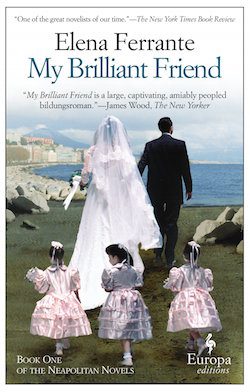 The Neapolitan tetralogy has stumped and delighted readers—is this feminist literature? Autobiography, epic, historical fiction? A four-act bildungsroman? Is it even realism? (Does it even matter?) Ferrante evades reviewers on every front. Her work makes Karl Ove Knausgaard’s My Struggle or Franzen’s Purity (like The Lost Child, released September 1) almost user-friendly by comparison, because at least these books come with built-in critical cues. Both Knausgaard and Franzen are literary callbacks to familiar genres and authors—Knausgaard is a longwinded hyper-realist, à la Proust, while Franzen is a panoramic social realist, à la Dickens. Both snap neatly into place with the contemporary issues of our times: Knausgaard’s confessional autobiography capitalizes and exaggerates upon the loss of privacy in the Internet Age; Purity dates itself to the student loan crisis. They are books “of the times.” What makes Ferrante’s work so slippery is the way it seems to transcend normal time all together. Though the content is contemporary (The Lost Child leaves off in the early ‘aughts), Lenu’s narration follows a rhythm that feels ancient. Years collapse into a single sentence (“From October 1976 until 1979, when I returned to Naples to live, I avoided resuming a steady relationship with Lila,” The Lost Child begins), and yet nothing feels rushed. It’s the rhythm of storytelling itself, the kind that carries a reader away from this time, this place, and into another realm completely. And whereas the publically prominent Franzen’s occasional fiction, meant to capture the American moment, cleaves the critical community in two, the feverish devotion of American readers and critics to the anonymous Ferrante suggests that she’s surprised us in some way. In some very good way. What is it Ferrante has that American fiction lacks?
The Neapolitan tetralogy has stumped and delighted readers—is this feminist literature? Autobiography, epic, historical fiction? A four-act bildungsroman? Is it even realism? (Does it even matter?) Ferrante evades reviewers on every front. Her work makes Karl Ove Knausgaard’s My Struggle or Franzen’s Purity (like The Lost Child, released September 1) almost user-friendly by comparison, because at least these books come with built-in critical cues. Both Knausgaard and Franzen are literary callbacks to familiar genres and authors—Knausgaard is a longwinded hyper-realist, à la Proust, while Franzen is a panoramic social realist, à la Dickens. Both snap neatly into place with the contemporary issues of our times: Knausgaard’s confessional autobiography capitalizes and exaggerates upon the loss of privacy in the Internet Age; Purity dates itself to the student loan crisis. They are books “of the times.” What makes Ferrante’s work so slippery is the way it seems to transcend normal time all together. Though the content is contemporary (The Lost Child leaves off in the early ‘aughts), Lenu’s narration follows a rhythm that feels ancient. Years collapse into a single sentence (“From October 1976 until 1979, when I returned to Naples to live, I avoided resuming a steady relationship with Lila,” The Lost Child begins), and yet nothing feels rushed. It’s the rhythm of storytelling itself, the kind that carries a reader away from this time, this place, and into another realm completely. And whereas the publically prominent Franzen’s occasional fiction, meant to capture the American moment, cleaves the critical community in two, the feverish devotion of American readers and critics to the anonymous Ferrante suggests that she’s surprised us in some way. In some very good way. What is it Ferrante has that American fiction lacks?
2.
In 1936, Walter Benjamin mourned that “less and less frequently do we encounter people with the ability to tell a tale properly.” Consumer capitalism, machine warfare, and the information age, he concluded, are all to blame, for corroding the “communicability” of human experience, the fountainhead “from which all storytellers have drawn.” But Benjamin’s other scapegoat was the novelist. For centuries, stories, epics, and fairytales derived from the oral tradition retained a certain sparseness of detail that made them easy to remember and retell. In other words, the emphasis of human narrative remained with the retelling, the sharing of experience.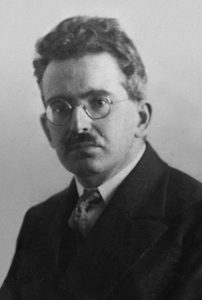 But with the arrival of the novel the oral storyteller of the past was now tempted toward representation in the extreme—he became the novelist, and we lost the story. And where stories once served to transmit experience and wisdom between generations, in the spirit of the ellipsis, the novel lands like a full stop to contemporary despair.
But with the arrival of the novel the oral storyteller of the past was now tempted toward representation in the extreme—he became the novelist, and we lost the story. And where stories once served to transmit experience and wisdom between generations, in the spirit of the ellipsis, the novel lands like a full stop to contemporary despair.
Benjamin’s disappointment with the novel re-entered popular critical channels some fifteen years ago, when James Wood wrote a polemical piece for The New Republic in which he coined a new genre, ‘hysterical realism,” that endures today. Among the original offenders were White Teeth, Infinite Jest, Mason & Dixon, and other contemporary British and American novels that critique and yet project those very same forces, so hostile to the story, that Benjamin noted decades earlier (consumerism; rapid information exchange; industrial warfare). Out to capture the hysteria of our times, these novels, like real life, end up moving too quickly for human emotion to coagulate between characters. Protagonists are buffeted through pinball plots without really seeming to feel anything at all. Developments arrive and disappear rapidly as headlines in the news, and the reader becomes conditioned to simply let them go. There’s no time to cultivate emotional reactions, and so by the end these stories can only resonate with us on a level that is “conceptual” rather than felt.
Wood was (and still is) widely criticized for his review. After all, many readers find a thrill in weaving conceptual loose ends into critiques of capitalism, into absurdist tapestries that depict the malaise of living in an atomized consumer society. And certainly there is something to be admired in the genre-pastiche of Mitchell’s Cloud Atlas, the fractal paranoia of a Pynchon plot, the sub-novel that is the footnotes to Infinite Jest. But the genius of these examples is ultimately a mathematical sort of genius, the genius of being able to hold a ten-thousand-digit number in one’s head. And so while I respect the authors Wood so unceremoniously lampooned, I have to join him in admitting that I don’t especially enjoy reading their books. But my dislike takes root in an extension of his argument. The problem for geniuses writing conceptually-driven fiction (however timely it may be) is that concepts, and the connections between them, are platonically timeless. Human connections, on the other hand, are made of nothing else but time—memory, reflection, the slow accumulation of time shared. Maybe what we need are fewer novels by geniuses, and more stories by storytellers.
3.
The argument over what the American novel should and should not be doing inevitably leads back to realism. As a result, the American relationship to the genre stands like a battered set of nesting dolls on the shelf of recent literary history. Remove the miniatures inside, line them up one by one: reportorial realism (e.g. Wolfe), dirty realism (e.g. Carver), the more recent domestic, magical and hysterical realisms emerge, each encased within the next. The iterations are never-ending, but one thing remains constant. At the center of the nesting set lies the modern moment, the basic form that gives shape to all the rest.
All this realism riffing suggests that the American novel would like to distance itself from the modern moment—to modify and qualify it—even as it’s become ever more devoted to capturing reality as is. The unruly taxonomy of the genre, the vacillations in American fiction and amongst American critics, point to the enormous difficulty of representing our broken country without sacrificing story, prose, and character in the process. This antagonism between the American zeitgeist and American literature has led to a general queasiness with representation itself. Wood’s hysterical realist examples seem so “cartoonish” because on its surface public life is a cartoon. The issue with hysterical realism and its ilk, at least for those of us who feel one exists, is not necessarily the hysteria, but the realism—it’s that they feel too real. Realist novels today are overly beholden to public time, the time of crowds, the time of now. They’re the new neo-realism, charged with the mimetic duty of capturing the world outside the American novelist’s window. They read like the world is laughing at us, in a way that feels all too familiar. Even Franzen’s post-ironic, post-hysterical “tragic” social realism (how the modifiers have accumulated!) carries too much of the anxiety, dread and humiliation that plagues the everyday. Isn’t the world absurd enough that any reflection of it is bound to be only a lesser version of the funhouse? One thing is clear—whatever variation on “reality” the Neapolitan novels inhabit, it’s a more interesting place to visit than the all-too-real version in which most contemporary fiction unfolds.
4.
The merit of a novel, Henry James once wrote, lies with its ability to project a sustained “illusion of life.” Fiction’s very raison d’etre, he argued, is to compete with life, via such illusions. And there’s a lot to be said for putting fiction and life in competition this way. For one thing, it silences the Victorian critic who’d damn every Madame Bovary that comes along and sustains a less-than-laudatory way of living. But it also gives the novel a domain of its own. If novels are to compete with life, then instead of wondering “What should fiction represent?”, we’d do better to ask: “What is it that only the novel can create, rather than reference or reflect?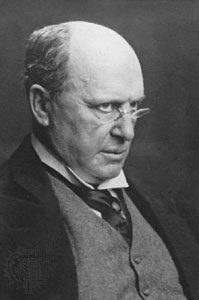 What sets it so apart from, and in competition with, life?” What the novel does better than any other art form is to lend time to those things that do not have time, at least not in the everyday sense. What it really mimics is the human mind trying to narrate—to weave into the fabric of time—something worth noticing, even though life passed it by. That’s what putting words to an experience is—encoding it in a narrative temporality that’s allowed to compete with, frustrate, and even contradict the rude and relentless progress of regular, linear time. And so while realism spins its wheels, the argument over contemporary fiction might be reframed in terms of narrative time.
What sets it so apart from, and in competition with, life?” What the novel does better than any other art form is to lend time to those things that do not have time, at least not in the everyday sense. What it really mimics is the human mind trying to narrate—to weave into the fabric of time—something worth noticing, even though life passed it by. That’s what putting words to an experience is—encoding it in a narrative temporality that’s allowed to compete with, frustrate, and even contradict the rude and relentless progress of regular, linear time. And so while realism spins its wheels, the argument over contemporary fiction might be reframed in terms of narrative time.
5.
What the contemporary novel too often lacks is an intuition for the sort of narrative time that can accommodate the full range of human experience—from the profoundly public to the deeply private, from the instantaneous present to the still depths of memory. The key is to recognize that experience is also hierarchical and stratified, not unlike the layers of the earth. At the surface of life lies the visible world, swept up in the chaos of the present. Here time seems to race along, indifferent to humanity, accumulating in great landfills that dwarf individual concerns. Information expires as it arrives, before we’ve had time to incorporate it into some larger narrative of what has occurred. But dipping below, away from the crowds and the chaos, our relationship to time, and so the nature of experience, changes. The deeper we descend, the less we know about the physical make-up of our surroundings, the more concentrated is our awareness of mortality, and the more valuable are those treasures we’re able to carry back into the sunlight. This sort of plunge through the upper crust of public time is what Heidegger called “authentic” temporality, a sort of recovery of individual sovereignty from the material world. Far enough below the surface, the only clock that matters is the one inside the mind, calibrated to the rhythms of one’s own fears, hopes, and concerns. The beauty of fiction is that it can make this private time public, drawing it up from the depths of consciousness in the form of a narrated story anyone can read.
At the uppermost levels of this temporal hierarchy lie the concerns of the contemporary American novel: the instantaneous present, fleeting as an ad, and the desperate attempt to snap its picture. On lower levels, we find the human mind reckoning with itself, even if all it manages to do is generate further doubt. As Augustine once wrote: “What, then, is time? If no one asks of me, I know; if I wish to explain to him who asks, I know not.” This is Ferrante’s domain. Her work is suspended in a sort of “once upon a time,” distant from the now, and lends itself to lament, confession, to a reckoning with time past. Confronted with old lovers, old haunts, old hurts, Lenu in the final volume of the Neapolitan series looks back on her relationship to Lila and wonders, “What time is now, what time is then.” And as Lenu begins a slow descent through the mineshafts of memory in search of an answer, her narration leaves the physical world behind. There are few details, sparse description, scant scenes—the series is told almost entirely in the mode of narrated thought, with the natural fluidity of mood and emotion. The result is that The Story of The Lost Child gently detaches itself from reality to settle in a new realm unique to storytelling and reflection. This is the first major difference between the Neapolitan novels and contemporary American realism(s): they dwell in stiller, deeper, more abandoned layers of time, removed from the everyday world and yet essential to the effort to stay human.
6.
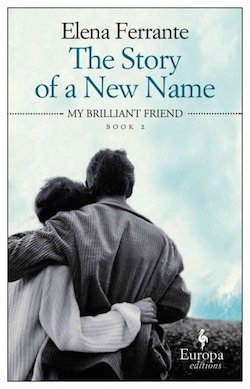 Paul Ricoeur calls this sort of temporality “narrative time,” and those novels that have it at their command “novels of time.” But the time-nimble narrative goes by other names. Walter Benjamin calls it the “story,” and its writer, a storyteller. Contemporary American readers and critics tend to call these sorts of novels “psychological novels” or “novels of consciousness” or “novels of memory,” where Woolf, Proust, and Sebald are all paragons of the form. Add to this list the “novel of voice”, where Nabokov draws the watermark. But Americans also tend to call these novelists aesthetes, and too often dismiss their prose styles as no more than something to be nostalgic for. Such tone and language have become irrelevant—they must have! After all, things are different—the Internet has arrived. The formal styles of the past are seen to have no place in an American literature tasked with the more practical issues of confronting the Web, consumer culture, and social class. Put this way, the work of the American novelist sounds very noble indeed, but also very impossible—it requires our novelists to be entertainers, public intellectuals, and moral heroes all at once. And for this reason, everyone’s avoided calling our new favorite foreign novelist, Elena Ferrante, an aesthete, a stylist, the sort of writer whose devotion to story is a devotion to prose, rather than a moral duty to save the world from itself. But that’s exactly what she is—and one of the best writing today.
Paul Ricoeur calls this sort of temporality “narrative time,” and those novels that have it at their command “novels of time.” But the time-nimble narrative goes by other names. Walter Benjamin calls it the “story,” and its writer, a storyteller. Contemporary American readers and critics tend to call these sorts of novels “psychological novels” or “novels of consciousness” or “novels of memory,” where Woolf, Proust, and Sebald are all paragons of the form. Add to this list the “novel of voice”, where Nabokov draws the watermark. But Americans also tend to call these novelists aesthetes, and too often dismiss their prose styles as no more than something to be nostalgic for. Such tone and language have become irrelevant—they must have! After all, things are different—the Internet has arrived. The formal styles of the past are seen to have no place in an American literature tasked with the more practical issues of confronting the Web, consumer culture, and social class. Put this way, the work of the American novelist sounds very noble indeed, but also very impossible—it requires our novelists to be entertainers, public intellectuals, and moral heroes all at once. And for this reason, everyone’s avoided calling our new favorite foreign novelist, Elena Ferrante, an aesthete, a stylist, the sort of writer whose devotion to story is a devotion to prose, rather than a moral duty to save the world from itself. But that’s exactly what she is—and one of the best writing today.
7.
I like stories that remind me of the way my family breaks bad news: someone comes into the kitchen, sits down at the table, and calmly tells you what has changed. Meanwhile, time slows down and the mind speeds up, struggling to come to terms. Ferrante writes this way, within these suspended moments. But what is so astonishing about the Neapolitan series is the way she’s able to suspend normal time for the length of her four-volume epic. At the level of the sentence, the scene, the chapter, time dilates to accommodate the emotion the story demands. How? In a very rare interview, Ferrante suggested to the Paris Review that this time dilation is purely a function of her prose:
The most urgent question for a writer may seem to be, What experiences do I have as my material, what experiences do I feel able to narrate? But that’s not right. The more pressing question is, What is the word, what is the rhythm of the sentence, what tone best suits the things I know?…It’s not enough to say, as we increasingly do, These events truly happened, it’s my real life, the names are the real ones, I’m describing the real places where the events occurred. If the writing is inadequate, it can falsify the most honest biographical truths. Literary truth is not the truth of the biographer or the reporter, it’s not a police report or a sentence handed down by a court. It’s not even the plausibility of a well-constructed narrative. Literary truth is entirely a matter of wording and is directly proportional to the energy that one is able to impress on the sentence.
This is the second major deviation between Ferrante’s Neapolitan story and most American fiction—it is the difference between an aesthetic, emotional truth and a fact that is true-to-life. Her work is governed by a sensitivity to the rhythms of language, of a story spoken and felt, rather than the rules of representation. To Ferrante, the right tone, the right rhythm—which is to say, the right stylistic form—can conquer even the most well-worn and sentimental clichés. Lenu’s narration is grooved with real human thought and feeling—self-reprimands, little envies, wishes and regrets—and the reader’s mind flows into those gullies as naturally as water. “I’m wrong,” Lenu thinks to herself, reflecting on a friend’s storytelling powers, “to write as I’ve done until now…I should write the way she speaks, leave abysses, construct bridges and not finish them, force the reader to establish the flow.” Anyone who has read the Neapolitan series will recognize that it is the steady rhythm of Lenu’s voice, conducted through Ferrante’s cool, metallic prose that, like a “solid gold chain,” draws her heavy story up from “the bottom of the well” and lifts it clear of sentimentality.
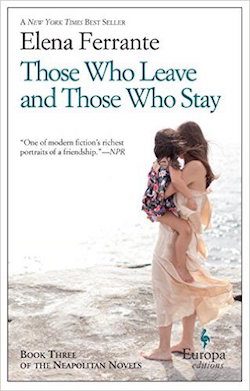 And how unreal that story is! Hyper-talented and hyper-seductive Lila, Lenu’s childhood best friend and rival, recalls the sirens of ancient myth more than any woman plucked from Naples’ narrow streets. Lenu regularly narrates anecdotes from her friend’s life that she never witnessed, and could not possibly relate in detail. And as with the rest of the series, in The Story of the Lost Child, the narration floats like tumbleweed over the physical world, touching down in scene just long enough to accommodate the realistic flourish of a refrigerator’s hum, the dark colors of someone’s skirt, a gray streak in Lila’s hair. A train ride from Florence to Naples, a decision to move to Milan, take no more than a sentence. And in all that space that would normally be occupied by a more realistic, more detailed account of daily life, Lenu is free to reckon with the very urgency of the human impulse toward narration. When she’s faced with aggressive political questions at a public book signing, she feels the need to say something “truer, genuine, [her] own,” and so abandons political rhetoric to tell a story about someone she knows from childhood. Trying to calm a terrified Lila in the aftermath of a devastating earthquake, Lenu calls to people she recognizes in the fleeing crowd, appealing to other “voices that would have their own stories of that terrible experience and so draw her into an orderly conversation.” But Lila is inconsolable, lost in the throes of one her mysterious psychological breakdowns that she calls “dissolving boundaries.” These episodes border on the incommunicable, but in a remarkable moment when Lenu tries to explain the phenomenon, the two women’s voices slosh together in a demonstration of this dissolution, Lenu’s narration collapsing into Lila’s desperation:
And how unreal that story is! Hyper-talented and hyper-seductive Lila, Lenu’s childhood best friend and rival, recalls the sirens of ancient myth more than any woman plucked from Naples’ narrow streets. Lenu regularly narrates anecdotes from her friend’s life that she never witnessed, and could not possibly relate in detail. And as with the rest of the series, in The Story of the Lost Child, the narration floats like tumbleweed over the physical world, touching down in scene just long enough to accommodate the realistic flourish of a refrigerator’s hum, the dark colors of someone’s skirt, a gray streak in Lila’s hair. A train ride from Florence to Naples, a decision to move to Milan, take no more than a sentence. And in all that space that would normally be occupied by a more realistic, more detailed account of daily life, Lenu is free to reckon with the very urgency of the human impulse toward narration. When she’s faced with aggressive political questions at a public book signing, she feels the need to say something “truer, genuine, [her] own,” and so abandons political rhetoric to tell a story about someone she knows from childhood. Trying to calm a terrified Lila in the aftermath of a devastating earthquake, Lenu calls to people she recognizes in the fleeing crowd, appealing to other “voices that would have their own stories of that terrible experience and so draw her into an orderly conversation.” But Lila is inconsolable, lost in the throes of one her mysterious psychological breakdowns that she calls “dissolving boundaries.” These episodes border on the incommunicable, but in a remarkable moment when Lenu tries to explain the phenomenon, the two women’s voices slosh together in a demonstration of this dissolution, Lenu’s narration collapsing into Lila’s desperation:
She struggled to elucidate the meaning, she wanted me to understand what the dissolution of boundaries meant and how much it frightened her…Real things which, with their violent, painful contortions, terrified her, would gain the upper hand over the unreal ones, which, with physical and moral solidity, pacified her; she would be plunged into a sticky, jumbled reality and would never again be able to give sensations clear outlines. A tactile emotion would melt into a visual one, a visual one would melt into an olfactory one, ah, what is the real world, Lenu, nothing, nothing, nothing about which one can say conclusively: it’s like that.
Ferrante forays into all sorts of drama that contemporary novelists have learned to avoid, for fear that the story will come out mawkish and clichéd, or even worse, irrelevant. But drama isn’t clichéd when the language of the story tames the tumult of its content, and in this way Ferrante is able to invite into her narrative the very concerns of realism itself: How to give words to a world that resists narration? The conviction that literature still matters too often leaves one “humiliated at having ascribed a power to things that in the current hierarchies were insignificant: the alphabet, writing, books.” It is this very humiliation that has cast the American novel into a seemingly perpetual state of crisis.
8.
This is not to give the impression that Ferrante’s novels are impervious to the outside world or public experience. Extending from post-war Italy to the present day, the Neapolitan novels are permeated by the major political and social movements of this historical period: communism, fascism, feminism, terrorism. But what is remarkable about the books’ relationship to the historical moment, especially to the American sensibility, is the extent to which politics and social unrest are present in the Neapolitan novels without dominating and foregrounding the narrative—in fact, the usual hierarchy between public time and event and private time and event is utterly reversed. Rather than grafting life onto the timeline of history, Lenu grafts history onto her life. In The Lost Child, the crystallization of capitalism fills the narrative ruptures in Lila and Lenu’s friendship—“They were complicated years…The exploitation of man by man and the logic of maximum profit which before had been considered an abomination, had returned to become the linchpins of freedom and democracy everywhere”—but the friendship that brackets this elegy to revolution remains the main event. Says Lenu of her relationship with Nino, the faux-communist revolutionary for whom she’s left her dependable, conservative husband, “The wailing police sirens, the check-points, the crack of helicopter blades, the murdered—all were paving stones on which we marked the time of our relationship, the weeks, the months.” Similarly, Italy’s conflict of black versus red is present in the novels because it is present in the memory of the narrator; it is the backdrop to the actual story, unfolding at the pace of Lenu’s narration and the rhythm of Ferrante’s prose. This reversal of the usual power dynamic between public and private experience can only be achieved by a novel in control of its time. Ferrante makes her deeply private telling of history, which might otherwise run the risk of ahistoricism, paradoxically public. Anyone can read it, and millions have. And to absorb Italy’s tumultuous political past, the encroachment of the Internet, or the disenchantment with revolution through Ferrante’s story is to have this history pass “directly from the story into the memory of whoever [is] listening.” It becomes something felt.
9.
These days, the genres that most matter to me are the ones that take into account the quality of a story’s time. A story can rush, dwell, stall.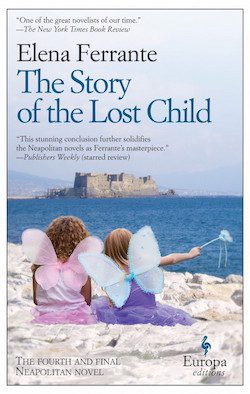 It can unfold in the time of the world, the time it takes for actions to occur. Knausgaard’s My Struggle is world-time par excellence: open the fridge, find the milk, take out the milk, pour yourself a glass. End scene. Other stories, however, are scored not so much to the rhythms of moving through the world as moving through a human mind. Ferrante is the kind of writer whose protagonists ask, “Why is the fridge open? I must have been thinking of something else.”
It can unfold in the time of the world, the time it takes for actions to occur. Knausgaard’s My Struggle is world-time par excellence: open the fridge, find the milk, take out the milk, pour yourself a glass. End scene. Other stories, however, are scored not so much to the rhythms of moving through the world as moving through a human mind. Ferrante is the kind of writer whose protagonists ask, “Why is the fridge open? I must have been thinking of something else.”
While the novel may never be able to capture the moment—the shallow relevance of “the times”—what it can capture is temporality itself: the human reckoning with time. And in this way it’s still well positioned to compete with—and even subvert—the logic of consumer capitalism that so much of American fiction rallies against. Proper storytelling can remind us that there are other layers of time open to us, points of refuge from the cartoonish absurdities of public time, and which are better suited for reinforcing human connections. Moments of stillness, reflection, and even that implacable realm of “once upon a time” in which the very first stories we ever read took place. In which these stories are still taking place, as they are told over and over again.
10.
Why care about narrative time? Why dig up James Wood’s old and widely-resented manifesto? Because a call for the return to aesthetically-minded storytelling, to a narrative style that can accommodate sustained reflection upon the human experience, serves the moral and political impetus of the American novel better than the American novel in its current form. The impulse toward noble and relevant art, for books that stand against a rotten world, is shared by most humanists writing hyper-/hysterical/neo-/magical/fabulist realism today. But as daily life in a consumer capitalist society tends ever more toward isolation and alienation, rather than intimate exchange, there is an urgent need for stories into which a reader dissolves, stories that lend the experience of truly entering another’s mind for hours or more at a time.





